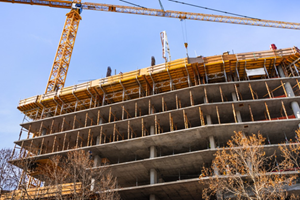In a bid to promote economic growth, in November 2016, the government announced plans to invest USD61.5 billion to develop various large-scale projects during 2017-2027, according to Statistics Canada. These projects include energy and public transport infrastructure projects; social infrastructure projects including childcare centers, leisure and hospitality buildings and affordable houses; trade-related infrastructure projects and the upgrade of road and digital infrastructure in rural areas. The government's major infrastructure development program is expected to support expansion in the construction industry over the forecast period. As a part of its 2016 budget, in February that year the government of Ontario announced plans to invest USD103.7 billion to develop large-scale construction projects by 2025. This is expected to support growth in the country's construction industry in the coming years. In March 2017, the government announced plans to launch the Canada Infrastructure Bank, a new investment hub to boost funding for construction projects in the country. The government's main aim is to mobilize funds from foreign and private investors by working in collaboration with provincial, territorial and municipal governments. Under the initiative, the government plans to construction several railway corridors, roads, ports, water treatment plants and energy transmission lines. According to Statistics Canada, the average new housing price index in the country rose by 2.5% from 96.2 in 2015 to 98.6 in 2016. The largest rise in house prices was recorded in Ontario, where the index rose by 4.9%. Saskatchewan, on the other hand, registered the largest decline at 1.6%. Canadian infrastructure will receive a boost with the renewed commitment by all levels of government to invest in new infrastructure projects and reduce the un-necessary lengthy application processes, according to The Buildings Show. Over the next few years, construction industry will be concerned with: uncertainties in emerging international economies, China's economic growth and global consumption, US demand and manufacturing capacity, labor shortage, interest rates, rising construction costs, outlook for the residential sector and energy costs. Land and property values have been maintained in specific primary and secondary markets across Canada in British Columbia, Ontario and Quebec. In terms of specific commercial asset classes, land will be actively traded across the country in 2016, especially infill and development opportunities. High -quality retail, office and multifamily properties will also be sought after, while coveted industrial assets will remain in short supply, according to CBRE Research. This is a good indicator for new construction projects in high value urban centers and retrofit projects of existing high-value assets for property owners and developers. The Canadian purpose-built Multi-Suite Residential property market exhibited healthy investment trends over the past year, keeping with the extended recovery phase of the cycle. The sector generated an attractive annual average return of 8.5% in the MSC 8 Index for the 12 -month period ending in June 30th 2015. In doing so, the sector ranked first among the major commercial property asset classes, according to Morguard Corporation. Canadian cities are poised to grow in the next 20 years due primarily from immigration. Demand for housing and pressures on infrastructure will be increased as a greater number of families find homes and commute to work every day.


Country Reports - Canada
Construction Sector in Canada:
Potential for Growth & Diversity
October 2017

Canada is considered one of the world's largest markets for residential, industrial, commercial, institutional and infrastructure development. Canadian infrastructure and construction sectors have experienced massive growth over the past 10 years, according to a report by The Buildings Show. Construction activity in Canada has been driven by government investment in infrastructure, oil prices, housing demand, immigration and investment in commercial building by the private sector. According to Statistics Canada, the total number of residential building permits issued in the country rose by 0.8% from 207,759 in 2015 to 209,338 in 2016. This was preceded by an annual decline of 1.1% in 2014 and an annual rise of 1.1% in 2015.











